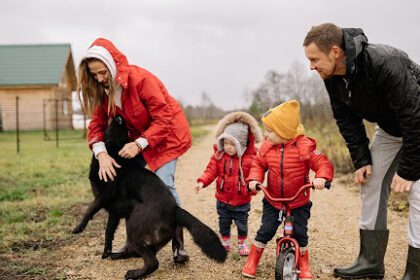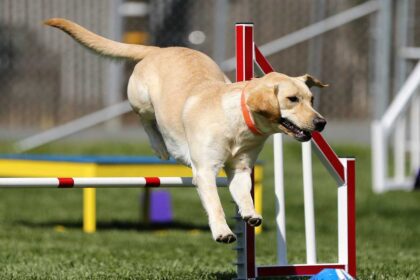Our furry companions fill our lives with joy, wet noses, and unconditional love. But sometimes, even the most well-behaved pup can exhibit perplexing behaviors that leave us scratching our heads (and occasionally, our furniture). Understanding these common dog behavior problems goes beyond simply shushing barks or redirecting chews and delves into the fascinating world of canine psychology, unlocking the root causes and effective solutions for a harmonious co-existence.
Fear not, for this article aims to unravel the mysteries behind the most common dog behavior issues, providing insights, statistics, and practical solutions to foster harmony in your canine-human relationship.
Excessive Barking

Prevalence: Research published in the Journal of Veterinary Behavior indicates that approximately 40% of dogs engage in excessive barking, making it a prevalent concern among dog owners.
Causes: Excessive barking can stem from various sources, including boredom, separation anxiety, fear, and a desire for attention. Dogs may vocalize excessively as a means of communication or as a response to environmental stimuli.
Solutions: Addressing the root cause of the barking is paramount. Providing ample mental and physical stimulation through activities like interactive toys, training exercises, and regular exercise can help alleviate boredom and reduce excessive vocalization. Desensitization techniques, such as gradually exposing the dog to triggering stimuli while rewarding calm behavior, can also be effective. Additionally, implementing consistent training protocols to teach quiet commands and rewarding desired behavior can help shape appropriate vocalization habits.
Chewing and Destructive Behavior

Prevalence: According to the American Kennel Club, 20% of dogs exhibit destructive chewing.
Causes: Destructive chewing can result from boredom, teething, anxiety, or a lack of appropriate outlets for natural chewing instincts. Dogs may resort to chewing on furniture, shoes, or other household items as a means of alleviating stress or excess energy.
Solutions: Providing dogs with a variety of durable chew toys tailored to their preferences can redirect destructive chewing behavior onto acceptable items. Engaging in regular exercise and mental stimulation activities can help reduce anxiety and boredom, thereby minimizing the likelihood of destructive behavior. Addressing any underlying medical issues, such as dental problems or gastrointestinal discomfort, is also essential.
Consistent training and supervision, coupled with positive reinforcement for appropriate chewing behavior, are key components of managing and preventing destructive habits.
Digging

Prevalence: The exact prevalence of digging is unknown, but it’s a common behavior in many breeds.
Causes: Dogs may engage in digging behavior due to boredom, excess energy, instinctual hunting behaviors, or attempts to escape confinement. Digging serves as a natural outlet for dogs to explore their environment, regulate body temperature, or seek shelter.
Solutions: Providing dogs with designated digging areas, such as sandboxes or designated patches of soil, can channel their digging instincts into acceptable outlets. Engaging in interactive play and physical activities can help expend excess energy and reduce the likelihood of boredom-induced digging.
Implementing reinforcement-based training techniques to redirect digging behavior towards appropriate activities, combined with regular exercise and mental stimulation, can effectively manage and mitigate excessive digging tendencies.
Jumping on People

Prevalence: Research published in the Journal of Applied Animal Behavior Science suggests that approximately 63% of dogs exhibit jumping behavior when greeting people, highlighting its widespread occurrence among canine companions.
Causes: Jumping on people is often motivated by a dog’s desire for attention, excitement, or as a natural greeting behavior. Dogs may engage in jumping as a means of expressing enthusiasm or seeking interaction with humans.
Solutions: Ignoring jumping behavior and refraining from providing attention or reinforcement can help extinguish this undesirable habit. Teaching alternative greeting behaviors, such as sitting or offering a paw, through consistent training and positive reinforcement can redirect jumping impulses. Rewarding dogs for maintaining all four paws on the ground during greetings reinforces desired behavior and encourages polite interactions with humans.
Separation Anxiety

Prevalence: The American Society for the Prevention of Cruelty to Animals (ASPCA) estimates that approximately 14% of dogs experience separation anxiety, highlighting its prevalence and impact on canine well-being.
Causes: Separation anxiety can arise from feelings of insecurity, loneliness, or stress when dogs are separated from their owners or primary caregivers. Dogs may exhibit distressing behaviors, such as excessive vocalization, destructive chewing, or house soiling, as manifestations of their anxiety.
Solutions: Gradually acclimating dogs to periods of alone time through desensitization and counterconditioning techniques can help alleviate separation anxiety. Creating a comfortable and secure environment, enriched with engaging toys and activities, can provide dogs with distractions and comfort during absences. Consulting with a veterinarian or certified animal behaviorist can offer personalized guidance and treatment strategies for severe cases of separation anxiety, which may involve behavior modification therapy or medication.
Special Notes
- It’s important to be patient and consistent when addressing any dog behavior problems.
- The best kind of training is always positive reinforcement.
- If you’re struggling to manage your dog’s behavior on your own, consult with a professional dog trainer or animal behaviorist.
By understanding common dog behavior problems and their solutions, you can create a harmonious and enjoyable relationship with your furry friend.
How PetsCityHub.com Can Illuminate Your Pet Journey
PetsCityHub.com, a treasure trove of pet-related information, stands as a beacon for pet lovers seeking guidance. Whether you’re a seasoned dog owner or a first-time pet parent, the platform offers expert advice, heartwarming stories, and comprehensive resources to navigate the intricate world of pet companionship. From training tips to product reviews, PetsCityHub.com is committed to enriching the lives of pets and their devoted owners.
Thank you













